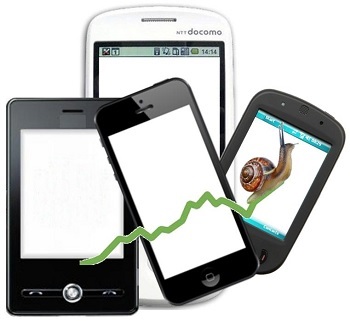A report from IDC has showed that even as it matures in some countries, others are still taking off.
The IDC has now released its report on the growth of the smartphone market for 2014 and it has shown that while mature marketplaces are forecasted to grow by only 4.9 percent, emerging regions are expected to keep up a tremendous rate of 32.4 percent.
Some of the regions of the world are experiencing faster growth than the average reported by IDC.
According to the report, the Indian smartphone market saw a massive 300 percent growth rate in 2013. As only 10 percent of the over 700 million users of cell phones had smartphones at that time, it was only natural that the growth rate be exceptionally high. By the first quarter of this year, the penetration rate of these mobile devices had already reached a much higher 29 percent.
In emerging countries, the dynamics of the growth of the smartphone market are different than in mature regions.
For instance, many emerging marketplaces do not have a broad scale fixed line infrastructure. Therefore, this means that it provides an ecosystem that is much more favorable for the use of mobile broadband technologies for the delivery of high speed internet connections than is the case in mature markets, where that infrastructure is considerably better established.
The demand within emerging regions is, therefore, driving growth in both smartphone shipments and in mobile broadband subscriptions. Two very large and yet highly different examples of this occurrence are going on in India and in China.
In China, the China Internet Network Information Center (CNNIC) reported that at the end of 2012, there was a 74.5 percent growth in mobile internet users to the most recent figure, which is 81 percent. Clearly, this is a notably higher growth rate and the CNNIC is calling the smartphones the primary driving force for internet use in the country.
On the other hand, in India, Mary Meeker from Kleiner Perkins, indicated in the report called the 2014 Internet Trends that while smartphone use is tremendous, revenues are very large, and the opportunity is considerable, companies are still seeing tiny margins. At the moment, only 4 percent of the budgets of advertisers in the country is being spent on advertising in the smartphone market.

